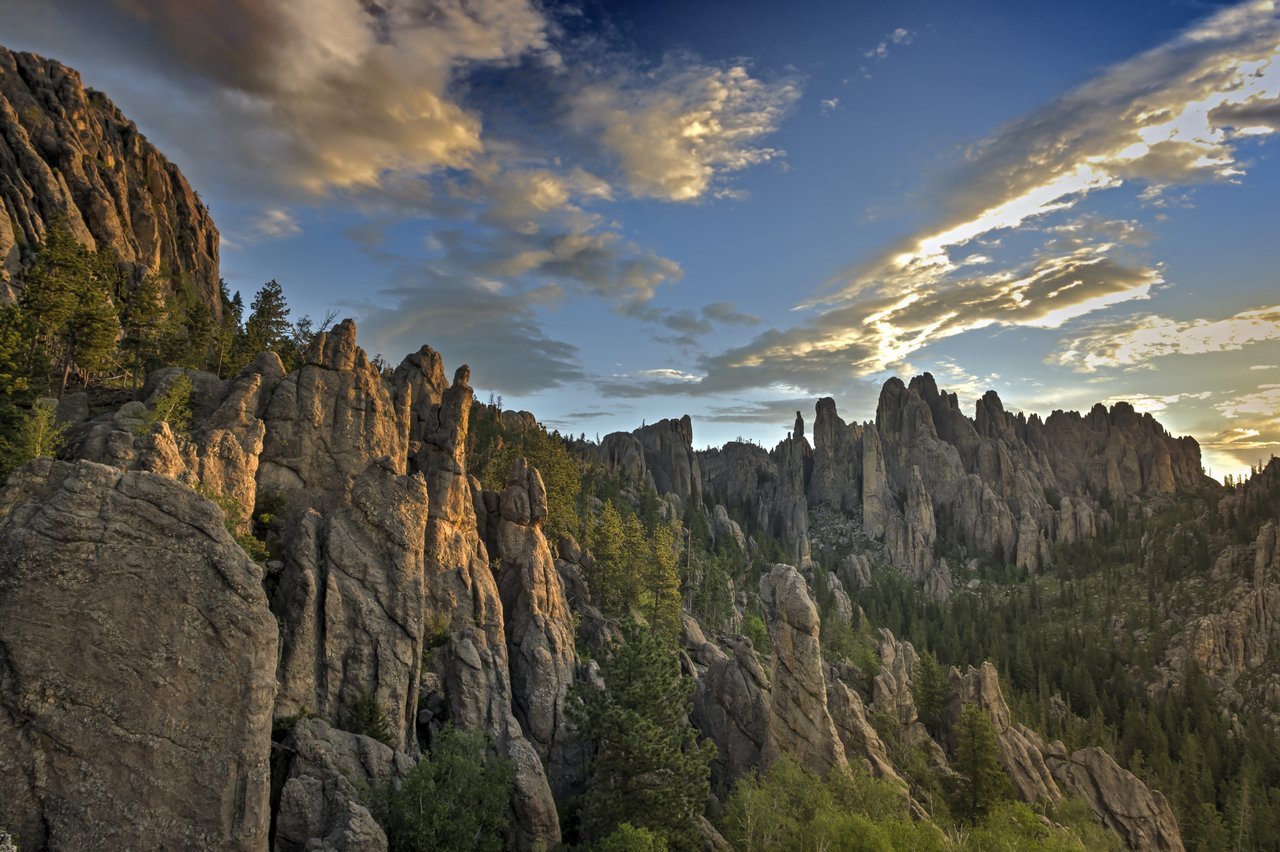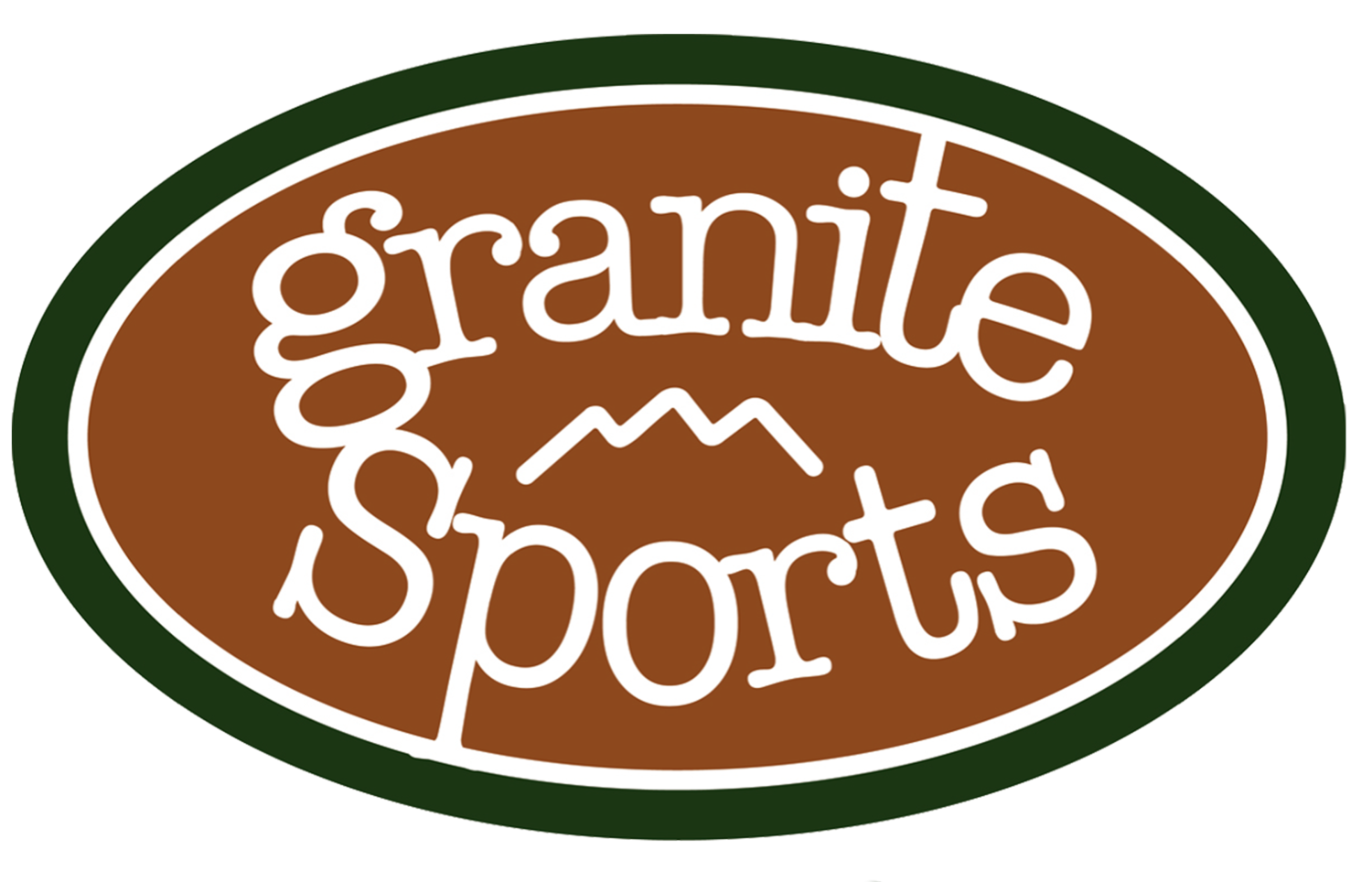
Explore the Black Hills
Hiking
Looking for info on Black Hills climbing and hiking? Below you'll find a list of some of our favorite places in the Black Hills area to hike, climb, and explore. For detailed directions to these locations and more, stop on in to the shop to pick up a guide book or map, or chat with our knowledgeable staff.
Mickelson Trail:
The Mickelson Trail, built on what was originally the Burlington Northern railroad line, covers over 100 miles of Black Hills, valleys, and grasslands, and has 15 easily-accessible trailheads between Edgemont and Deadwood. With terrain that is friendly for hikers of all ages and abilities (rated easy to moderate,) the ten-foot-wide "Mick" is covered in packed gravel and is also open to bicyclists, horseback riders, and cross country skiers.
Custer State Park:
Mountain biking, hiking and horseback trails abound throughout Custer State Park. From easy 30-minute strolls to strenuous day-hikes and even a few overnighters (in the French Creek area and Black Elk Wilderness,) there is truly something for everyone. The park is home to the iconic Harney Peak, the highest peak east of the Rockies, and hikers can view four states from the tower at the summit.
Centennial Trail:
Stretching 111 miles from Bear Butte to Wind Cave, the Centennial Trail can be covered in one impressive backpacking stretch, or divided into manageable 4-10 mile day hikes between any of the twenty-four trailheads. The trail provides hikers with endless variety and has more than it's share of wildlife, beautiful vistas, and quiet moments.
Bear Butte State Park:
Gain more than 1,000 feet in elevation as you ascend the Mato Paha or Bear Mountain as the Lakota dubbed this unique geological formation. Though it is a somewhat strenuous trek (bring plenty of water on a hot day; the trail offers almost no shade,) the summit offers sweeping views of the surrounding grassland. Bear Butte is still considered sacred by many American Indian tribes who continue to hold religious ceremonies in the area; hikers will see prayer flags and other ceremonial objects along the trail.
Roughlock Falls Nature Area:
Tucked into the intersection of two large canyons (Spearfish Canyon & Little Spearfish Canyon), the Savoy area boasts unique limestone formations, thick pine and deciduous forest, and gorgeous waterfalls; the canyon is lovely year-round, but especially breathtaking in early fall. The area immediately surrounding Roughlock Falls has a picnic ground, recently improved viewing areas, and paved, wheelchair-accessible paths. An easy, 1-mile trail follows Spearfish Creek from the falls down to the Spearfish Canyon Lodge.
Climbing
Climbers: if you really want to maximize your climbing time, hiring our friends at the Sylvan Rocks Climbing School and Guide Service is a great way to start learning the areas.
The Black Hills Needles:
"The Needles" (the climbing areas south of Harney Peak, down to and within Custer State Park) are home to some of the best granite face climbs in the world. Herb and Jan Conn did a heroic job of developing the area back in the 40s and 50s, adding routes up to 5.8s in tennis shoes they got at Woolworth's - "tight as we could get 'em." The unique and beautiful spires offer countless high-adventure routes and breathtaking summits, with the most popular areas including the Cathedral Spires, Moonlight Ridge, Middle Earth, Sylvan Lake/The Outlets, Ten Pins and the Needles Eye. The lush pines and towering rock can make finding routes confusing; connect with the great people at Sylvan Rocks for some expert advice (they also guide Devil's Tower and the Rushmore areas), or stop in to our store to pick up one of multiple guide books on the area.
Rushmore:
The granite of the Southern Black Hills (east of Harney Peak) provides for nearly 1,000 trad, sport and mixed routes. With a huge variety of difficulty levels and easy, roadside access to many of the areas, Rushmore area climbing has something for everyone. Popular areas include the South Seas, Chopping Block and Breezy Point, but detailed info on those and several more can be found in The Needles of Rushmore (Burr, Andrew & Busse, Andrew; 2012).
Spearfish Canyon:
A expansive playground of limestone cliffs, Spearfish Canyon offers diverse routes varying from 5.6s to 5.13s, short (a 25-footer at Skeletal Remains, the first area to be developed) to long routes (The Dark Side), and plenty of good year-round options; most of these climbs are located 30-50 minutes from the charming town of Spearfish, which has great coffee and dining options. Ice climbers won't be disappointed either, as there are a few great places to get your kicks on the falls right along the highway during winter.
Falling Rock:
Falling Rock is a limestone canyon about 6 miles from Rapid City. The climbing is on edges and pockets on vertical to slightly overhanging walls that are around 40 feet high. There are toprope anchors on most of the routes, and many are bolted for leading as well. Most climbs fall in the 5.8 - 5.11 range. The North Rim is a great place to climb in the winter, as the sun shines directly on the wall and the area is well-protected from the wind. It gets almost too hot here in the summer, and wasps nesting in the pockets and cracks can be really annoying - there's even a route on the North Rim named for this inconvenience.
The VC:
Home to one of the best limestone walls in the Black Hills (Victor Charlie), the VC is located in Victoria Canyon, just a short drive southwest of Rapid City. With over 60 routes and a good mix of sun and shade, this beautiful canyon has plenty to offer, but access can vary greatly depending on weather conditions. Get your hands on a copy of Mikel Cronin's Spearfish Canyon, The VC & other Black Hills Limestone (2012) for great route details, and check out the forums at Mountain Project for current accessibility info.
Devil's Tower:
One of the most iconic crack climbing areas in the country, Devil's Tower boasts more than 200 routes, ranging from free climbing (5.6 - 5.12) to aided climbs (A1-A4 and C1-C3). Routes to the summit of Devil's Tower provide 500 - 600 feet of climbing and very solid rock. More than 1,000 climbers are on the Tower every year with most climbers using the more moderate routes, leaving several of the technical and difficult routes much more private.


